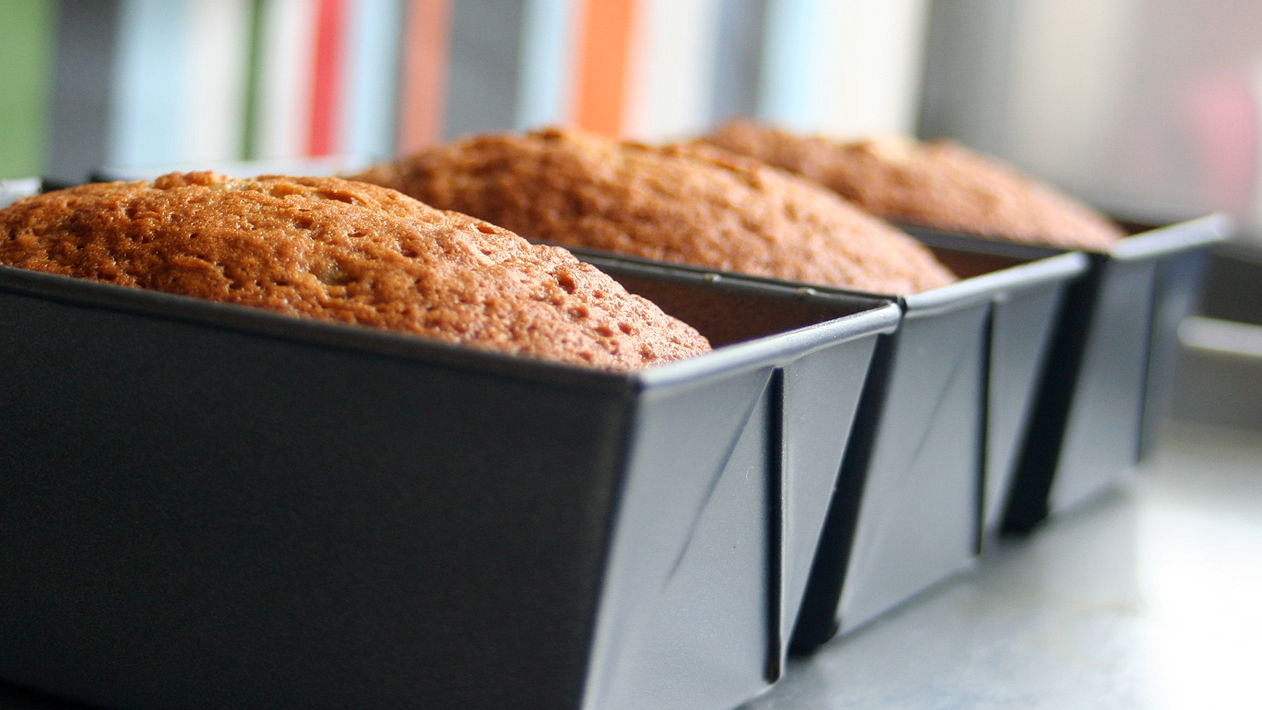Make Perfect Banana Bread By Decoding Your Bananas
Turns out the key to making perfect banana bread is, well, the bananas. We'll explain.
Have you been driven to the brink of madness by banana bread? Does the concept of banana muffins confound you? Have all your results been delicious, but wildly inconsistent? Sometimes banana bread comes out so soft and tender, it falls apart in your hands. Other times it's sturdy and firm, like a proper loaf of bread, but sorely lacking in banana flavor. How can banana bread, one of the easiest recipes in the entire baking pantheon, be so fickle and temperamental?
Well, the good news is that you needn't blame yourself for these inconsistencies. The reason that some banana breads and muffins are soft and sweet, and others are firm and flavorless, has everything to do with the bananas you use, and nothing to do with your baking abilities.
When a banana is born, it's mostly made out of starch. You already know all about how sturdy starch is: You can mix starch with water to make glue, crisp up your clothing by ironing with some spray starch, and even make starch-based homemade Play-Doh that can dry into hard, technically edible figurines. In food, starch provides structure. (Think of how a bowl of oatmeal solidifies into a moldable paste when left unattended, or how you can used dry mashed potatoes to build a tiny house for ants.)
When bananas are green, they're super starchy and practically flavorless; when they've ripened into a bright shade of yellow, they've improved quite a bit in the flavor department, but are still starchy enough that anything you bake with them will be on the sturdier side of things. Here is how your baked goods will be influenced by the type of bananas you use in them:
- Green bananas will yield a stiff, not-entirely-pleasant baked good that's light on the banana flavor.
- Bright yellow bananas will yield banana bread and muffins with a nice, domed top, and cakes will be dense enough to be layered with frosting or brushed with flavored syrup. There's a slightly softer structure than when you're baking with green bananas, and better flavor.
- Yellow bananas with black spots yield a fall-apart banana bread with the most pronounced banana flavor.
When bananas ripen, all that starch slowly begins converting into sugar. Notice how bananas pretty much turn to mush the riper they get? That's because all their starchy structure has melted into a puddle of sweet, tasty goo. If your bananas are extra soft and their peel has turned brown, you're essentially thinning out your batter with liquid sugar, and this is absolutely okay. Though your finished product might not be the most best looking banana bread on the block, it will be unbelievably delicious, and brimming with beautiful banana-y sweetness.
Make perfect banana bread every time
So is there a "right" or "wrong" banana to use in your banana-based baked goods? Nope. You are allowed to bake with whichever bananas you have available, or whichever ones suit your personal tastes. I myself like ones that are about 50/50 yellow and brown, but you might prioritize a sturdy structure and go for a less ripe banana.
But let's say you don't have full control over your banana situation. What if you need to bake a banana-based recipe right away, and must use whatever bananas life has dealt you? Here's what you do:
- If you have green/under-ripe bananas: Begin your recipe by smashing the bananas and sugar together as well as you can; let them sit for about five minutes, then give them another good smash. Continue on with your recipe, then taste the batter before it goes into the pan. Not crazy about the flavor or texture? Add more brown sugar, stirring in a few tablespoons at a time, tasting as you go. You may also want to consider adding more spices, vanilla, or chopped nuts/chocolate chips, since the batter will be light on banana flavor, and will need some tasty reinforcements.
- If you have overripe/black bananas: Gradually add more flour a few tablespoons at a time (you don't need to measure) until the batter looks firm and bake-able. This is not an exact science, so you'll need to trust your gut—and remember to take notes! Your banana bread is an experiment, and the more often you bake it, the better you'll get at using visual cues to make one that's perfect to you.
If you're looking for a spectacular banana bread recipe that's easy to make adjustments to, check out my recipe for caramelized upside down banana cake, and simply omit the topping. The basic recipe can be made in loaf pans, cake pans, muffin tins, or anything else you want—the only change you'll need to make is cooking time, which you can figure out by keeping an eye on things, and taking notes for next time.
And if you need other suggestions for what to do with your leftover bananas, may we suggest making eclairs, pudding pops, or even... a casserole?
